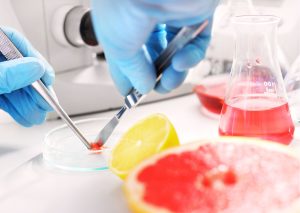 Patenting food products seems at first to be unlikely. However, many well-known and liked food products and production methods have indeed been patented. There are, however, a number of factors to take into account when applying for food patent protection.
Patenting food products seems at first to be unlikely. However, many well-known and liked food products and production methods have indeed been patented. There are, however, a number of factors to take into account when applying for food patent protection.
Any invention has to fall within recognised categories of patentable subject matter, has to be innovative and must be capable of commercial exploitation. An invention meeting these standards is patentable. However, it is essential to set out the details of the invention in a patent application to meet the disclosure and description requirements of patent law.
Food products in India will not usually qualify for patent protection because they are categorised as “methods of preparation”, not innovative products or processes with significant technical or commercial value. A method for creating a new product or finding a new use for an existing product cannot be patented if it only involves making a new form of a known substance, combining known properties, rearranging existing components or isolating known ingredients or compounds. A simple mixture of substances cannot be patented, even if it is new, by merely combining the properties of the individual components in a way that is obvious.
However, food products can be patented by being a “new and useful product”, a “composition” or a new “method used to produce them” should they otherwise fulfil the requirements.
Innovative food products or novel components, particularly those offering health benefits or distinct tastes, may be patented. For example, Patent IN531515, a “functional food composition for enhanced calcium absorption in women and method of preparation thereof”, is acceptable. New food compositions can be created by mixing certain ingredients in an innovative way to produce distinctive elements such as flavour, texture or nutritional value. Patents can protect new food ingredients or combinations of ingredients or formulations. For example, Patent IN546152, “a novel synergistic glycemic index lowering food stuff, its composition and preparation thereof” is again permitted.
A new food composition may be formulated by combining specific ingredients in a novel way to achieve unique characteristics such as shelf-life, taste, texture, nutritional profile, bioavailability or an alternative to existing food products. A specific food product is a combination of ingredients with a unique blend. Products with a fusion of elements may be patented if they are novel and inventive. Patents IN459501, a “food supplement comprising a thermostable protease for enhancing protein bioavailability”, IN556067, a “milk-based formulation for goat kids and process of preparation thereof” and IN373240, a “shelf stable food product”, have been granted.
Food compositions offering distinct nutritional advantages or health benefits such as improved bioavailability, reduced allergenicity, enhanced stability and the targeted delivery of specific ingredients can be patented. Patent IN473740 claims a “unique method for the use and manufacturing process of moringa leaf powder formulation as a superfood for anaemic children and women”.
Functional food compositions such as those offering improved gut health, boosted immunity or managing specific health complications, can be patented. This is shown in Patent IN403609 that promises “multigrain compositions and methods thereof”.
Patents for food composition may also involve novel or proprietary ingredients providing a competitive edge in the market. Such ingredients may come from unique plant varieties, microorganisms or synthesised compounds offering specific benefits. Patent IN398184 touts a “ready to drink tea-based beverage comprising cellulose microfibrils derived from plant parenchymal tissue”. A specific food product made of a unique combination of ingredients and representing a fusion of components may be patented if it is novel and inventive.
Food products may be patented if they have unique characteristics or attributes distinguishing them from existing products. Patents can be granted for shelf-life, increased bioavailability, nutritional value or other unique characteristics. The food industry is rapidly developing biotechnology, plant-based alternatives and more sustainable options. As such markets grow, increased patent protection for food products is expected to be sought.
Authors: Manisha Singh and Dr. Sasi Praba
First Published by: IBLJ here



